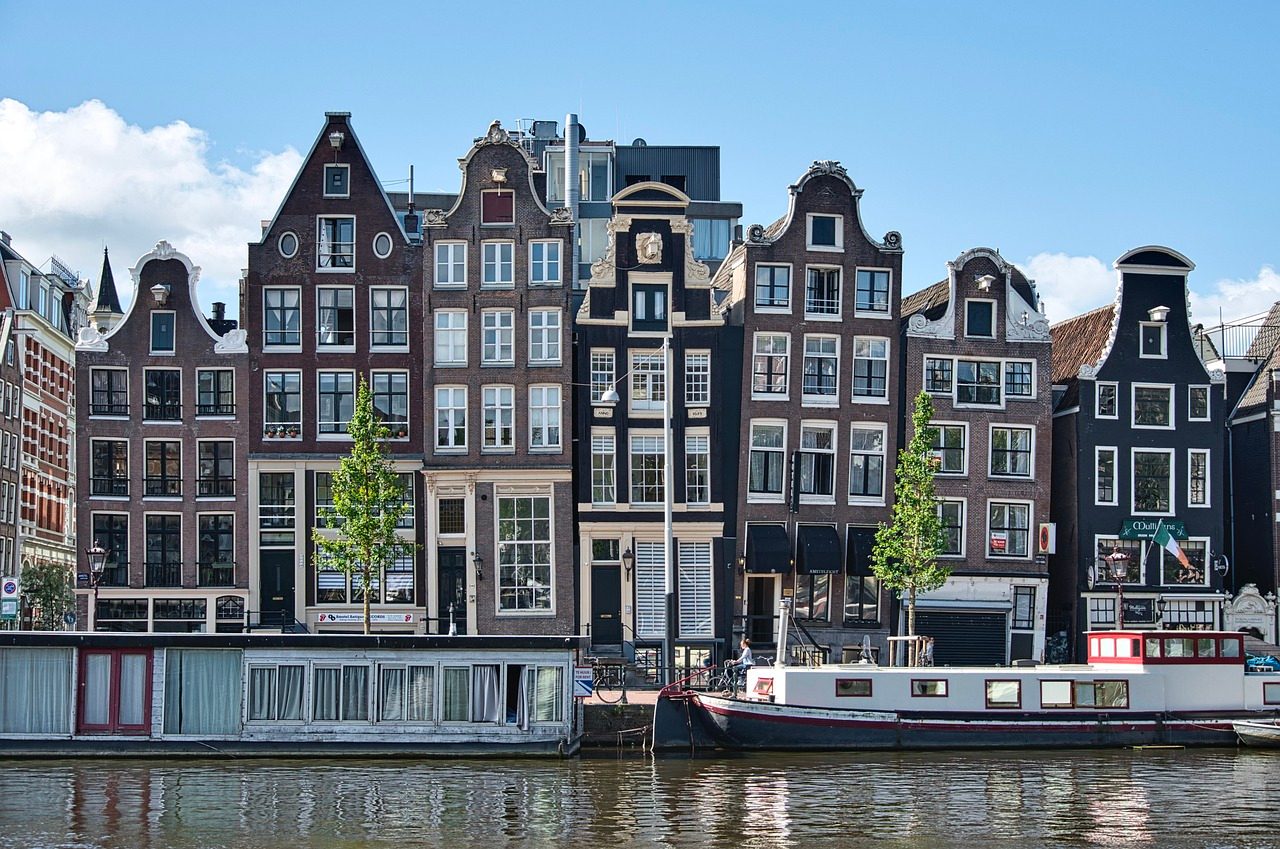The History Of The Amsterdam Cannabis Scene

Are you ready to learn a few things about the history of the Amsterdam cannabis scene and the city in general? Due to its large number of canals, Amsterdam is often referred to as the “Venice of the North”. However, being the capital city and the most populous one, it has far more to offer than an elaborate canal system.
History and culture are everywhere to be seen, but an aspect of the city that has long held interest for weed lovers is the very well-established coffeeshop culture.
It is the fascinating, many would say, groundbreaking history of the Amsterdam cannabis scene that will be looked at below.
Let us Head Back to The 1960s
The 1960s was a time of great social and cultural change throughout the Western world. It was during the early 60s that the hippie subculture began in the United States. While hippies may have shocked the older generation with their dress, lifestyle, and use of drugs, it quickly caught the attention and adoption of young people in many parts of Europe.
This fact was not lost on the younger Amsterdam crowd and the result was a rapid rise in drug use. As the 1960’s progressed it was common for the younger generation to meet and buy their cannabis at a variety of locations around the city. One very popular spot was the large public urban park; Vondelpark.
The problem here was that many of the Amsterdam cannabis dealers were also selling hard drugs. While the authorities did not focus too much on those who smoked cannabis they began clamping down on anyone selling hard drugs.
Even so, Vondelpark remained a cannabis-smoking hotspot for many Dutch citizens and tourists throughout the ‘60s and onward.
Around 1965 many of Amsterdam’s ordinary citizens and intellectuals were smoking dope. The Amsterdam cannabis scene was already beginning. That led to the formation of a small hippie movement known as Provo which did its best to provoke authorities by organizing activities and smoking cannabis openly. It is said that this movement later developed into a cultural phenomenon.
A Tea Shop That Was Way Ahead of Its Time
One year later Mila Jansen and her business partner Henk Koster opened a clothing fashion store called Kink 22. They made their own 60s-style clothing and the shop was a huge hit. However, work was so exhausting that in 1967 they changed the shop name to Cleo de Merode and turned it into a tea shop.
By this time, Mila and Henk were famous, and many friends would meet there for tea and socializing. However, the tea served often came with a free joint!
These joints contained tobacco and hashish brought into the port of Amsterdam by sailors from the likes of Turkey, Lebanon, and Afghanistan. Weed was still not around at the time.
It is considered by many that Mila and Henk’s teahouse was the prime precursor for the many Amsterdam cannabis coffeeshops that would subsequently rule one area of the city.
Roll on Into The 1970s
And rolling joints it certainly was! In 1972 Mellow Yellow was the city’s first unofficial coffeeshop. It was founded by Wernard Bruining and originally opened up on Weesperzijde. At the time it was also known as a tea house.
No big signs or advertisements announced its presence and it was not initially easy to tell that the place sold cannabis. That changed rapidly when queues regularly formed a long way down the street waiting to get in!
The concept was simple. Wernard and friends did not want to get involved with the problems that having to deal with potentially troublesome dealers could bring. To solve that one problem they went to one dealer (named Cesar) and would buy a pound or kilo of hash at a time.
From there, it was cut into pieces costing 10 or 25 guilders and sold to those customers who queued down the street. In essence, this turned out to be the golden coffeeshop formula as is known today.
Other Coffeeshops Began to Open
Not so well known by many outside of the Amsterdam cannabis connoisseurs circle is the fact that the Rusland coffeeshop which opened on 30th April 1975 was older than the famous Bulldog Coffeeshop that many class as Amsterdam’s first dedicated coffeeshop.
The Bulldog was opened by 24-year-old Henk De Vries in December 1975.
He had inherited one of his father’s sex shops, and while he did originally sell cannabis from that sex shop, after some thought, he transformed it into a coffeeshop.
Things were certainly not easy at first. Henk had to put up with numerous run-ins with the police, but his determination during that tough period has paid dividends. He has grown in strength over the ensuing years and he now owns multiple coffeeshops and other establishments around the city.
Major Seachanges Come Into Being
It was in 1976 that the first major seachange occurred. The Dutch government decided to clearly distinguish the difference between soft and hard drugs and focus their attention on what they classified as hard drugs. The reason behind this thinking was at that time there was a huge problem with heroin in terms of importation, exportation, and use.
The upshot was that possession of up to 30 grams of cannabis was no longer an offense. While by the laws, coffeeshops were still classed as illegal, they continued to open around the city and by 1980 a tolerance policy existed. That meant Amsterdam cannabis coffeeshops could operate without interference from the authorities with a strict stipulation being that no hard drugs were allowed on the premises.
The early 1990s is viewed as being the golden period of Amsterdam’s coffeeshop community with over 500 in operation. However, organized crime and money laundering were becoming a significant problem with some of them and many were forced to close. By 1995 the laws were further tightened and licenses for the remaining 350 or so coffeeshops were issued.
Tighter rules and restrictions meant Amsterdam cannabis coffeeshops did not have the same freedom as previously. Any coffee shop that broke any of the rules had their licenses revoked and could not apply for another. Nor could anyone apply for a new license on those premises. That caused a gradual but significant drop in coffeeshop numbers over the following years.
Moving Into The 2000s
Further changes came into being in 2007. Until then, coffeeshops were allowed to sell alcohol as well as cannabis. That was no longer the case and meant owners had to choose between selling either cannabis or reverting to a bar/restaurant. It was also decreed that any coffeeshop within 250 meters of a school had to close. Both rulings further reduced coffeeshop numbers.
On top of that, the government’s Project 1012 (named after the Red Light District’s Postcode) was classed as a ‘clean up’ operation, and this closed many coffeeshops and red-light windows in the area.
What Does The Future Hold?
As of 2023, it is estimated there are now around 160 coffeeshops in Amsterdam. Most of these Amsterdam cannabis coffeeshops are located in the De Wallen area (The Red Light District). While that still gives genuine weed lovers ample scope to buy and smoke a wide variety of weed in a relaxed atmosphere, this could change even further.
The Mayor, Femke Halsema, and her councilors are busy promoting an initiative that would ban all tourists from entering coffeeshops in Amsterdam. If that ever does go through, it would be the end of Amsterdam’s coffeeshop culture as the weed capital of Europe.
Many argue that such a harsh initiative would have a huge impact on visitor numbers and, in turn noticeably impact the city revenues. It is also stated that such a ban would simply see a massive increase in illegal street dealing. Not only in cannabis but also in harder drugs and the issues that type of activity brings.
If you have enjoyed reading this article about the history of the Amsterdam cannabis scene and would like to keep up to date with all-things related to the cannabis world, please click here.
